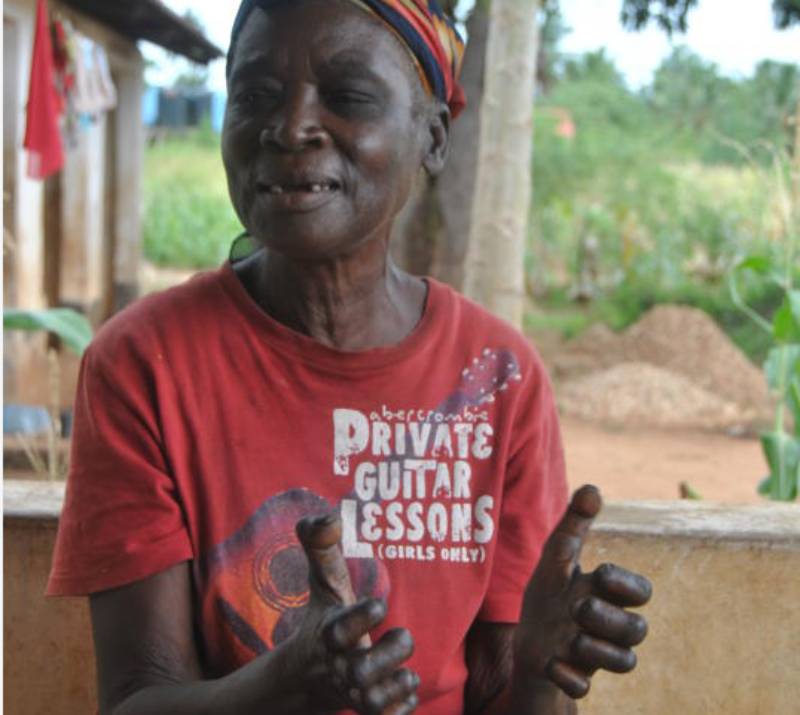
Cases of leprosy are on the rise despite the disease having been eliminated from the country in 1989.
The warning is contained in a report published on April 22, by the Ministry of Health and the World Health Organisation (WHO).
The report says leprosy cases have been on the rise since 2012 with risk of contracting the disease high in Kwale, Kilifi and Homa Bay counties.
“We estimated that people living in Kwale, Kilifi and Homa Bay counties are 15, 9, and 5 times respectively, more at risk of leprosycompared to the whole country,” says the report.
Other areas also at higher risk of leprosy are Siaya, Busia, Mombasa, Kisumu and Lamu, says the report appearing in the journal PLOS Neglected Tropical Diseases.
The bad news came as WHO reported that five disease outbreaks in Kenya are worsening. The WHO bulletin for this week shows cholera outbreak has reached 1,212 cases, dengue fever 680, measles 418, kala-azar 235 and Rift Valley Fever 189.
In the leprosy report, the team of experts warns of concrete evidence that the disease is being transmitted in Kenya and it is causing permanent disabilities in patients.
The experts attributed persistence of leprosy in Kenya to lack of funding and inconsistent surveillance systems.
“Leprosy control activities have not been a priority in Kenya and there is no consistent funding for active surveillance,” says the study also involving the National Tuberculosis Leprosy and Lung Disease Program.
The team now wants health authorities, particularly in counties at high risk to educate the public on how to identify and protect against leprosy.
Sensitised on symptoms
They want health workers sensitised on symptoms of the disease and also trace people and especially children who may be affected. The team also wants county governments to allocate resources towards leprosy control.
Significantly, the study found higher infections in males compared to females though global leprosy control efforts emphasizes more on women and children.
The Kenya team wants health workers to give equal attention to men and women while screening for leprosy.
Kenya achieved the WHO leprosy elimination target in 1989 with cases reducing dramatically from 6,558 cases in 1986 to 80 in 2012. However, the study shows the cases have increased to 114 in 2013, 142 in 2014 and 131 in 2015 which covered the survey period.
Though this increase, the report says appears small about a half of patients reported with leprosy in 2013 have developed permanent disabilities.
“This advanced form of the disease implies localised infection which continues to be spread in the communities as individuals stay for longer periods before being diagnosed,” says the report.
For the four-year study period, 467 leprosy cases were notified in Kenya distributed among 28 counties.
Of these, 291 or 62 per cent were males and 176 or 38 per cent were females. Of the notified cases 380 were new events, an indication that leprosy is still transmitting in the country.
Of the notified cases, 88 patients were 65 years and older while 35 were children aged up to 14 years. During the reporting period, the study shows rates were higher among males than females.
“Leprosy transmission remains active in Kenya as evidenced by the substantial number of cases aged below 15.”
Childhood cases, the experts explain are usually associated with recent active transmission, given leprosy’s long periods of incubation for up to 20 years.
The data also shows the most risky areas for leprosy infection are at the Coast and near Lake Victoria raising questions whether water bodies have anything to do with the disease.
The experts do not have the answer but indicate that in other countries, nearness and especially bathing in open water bodies has been linked to an increase of leprosy. Other organisations involved in the study are Kwale County Government, Taita Taveta University and Makerere University, Uganda.
 The Standard Group Plc is a multi-media organization with investments in media platforms spanning newspaper print
operations, television, radio broadcasting, digital and online services. The Standard Group is recognized as a
leading multi-media house in Kenya with a key influence in matters of national and international interest.
The Standard Group Plc is a multi-media organization with investments in media platforms spanning newspaper print
operations, television, radio broadcasting, digital and online services. The Standard Group is recognized as a
leading multi-media house in Kenya with a key influence in matters of national and international interest.











